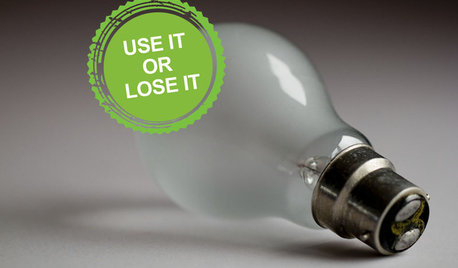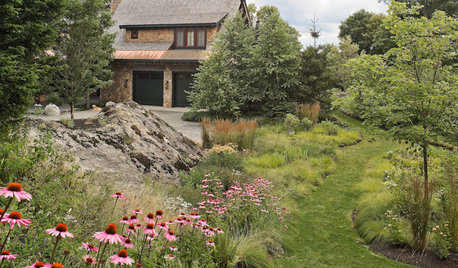How do I get rid of filamentous algae?
newgen
12 years ago
Related Stories

MOST POPULARHow to Get Rid of Those Pesky Summer Fruit Flies
Learn what fruit flies are, how to prevent them and how to get rid of them in your home
Full Story
DECORATING GUIDESLose It: How to Get Rid of Old Light Bulbs
When the light goes out, you'll want to get rid of the bulb safely. Here's how
Full Story
SAVING WATERXeriscape Gardens: How to Get a Beautiful Landscape With Less Water
Conserve water and make gardening much easier with the xeriscape approach’s 7 principles
Full Story
LIFEThe Top 5 Ways to Save Water at Home
Get on the fast track to preserving a valuable resource and saving money too with these smart, effective strategies
Full Story
COLORWant Gorgeous Interior Colors? Look to the Light
See how to manipulate natural and artificial light — and learn about those baffling new bulbs — to get the exact room colors you want
Full Story
GARDENING AND LANDSCAPINGHow to Make a Pond
You can make an outdoor fish paradise of your own, for less than you might think. But you'll need this expert design wisdom
Full Story
DECORATING GUIDESHouzz Call: What Home Collections Help You Feel Like a Kid Again?
Whether candy dispensers bring back sweet memories or toys take you back to childhood, we'd like to see your youthful collections
Full Story
GARDENING GUIDES13 Risks to Take for True Garden Rewards
Go ahead, be a rebel. Breaking rules in the garden can lead to more happiness, creativity and connection with the earth
Full Story
MOST POPULARMeet a Lawn Alternative That Works Wonders
Carex can replace turfgrass in any spot, is low maintenance and adjusts easily. Add its good looks and you’ve got a ground cover winner
Full Story
GARDENING GUIDES15 Ideas to Try in Your Garden This Year
These gardening stories were tops among Houzz readers. Which ideas might you try this year?
Full Story






chas045
newgenOriginal Author
Related Professionals
Hershey Landscape Architects & Landscape Designers · Mountain Brook Landscape Architects & Landscape Designers · Palm Springs Landscape Architects & Landscape Designers · Port Royal Landscape Architects & Landscape Designers · Woodinville Landscape Architects & Landscape Designers · Aberdeen Landscape Contractors · Davis Landscape Contractors · Gainesville Landscape Contractors · Galt Landscape Contractors · Lorain Landscape Contractors · Muttontown Landscape Contractors · Painesville Landscape Contractors · Panama City Beach Landscape Contractors · Soddy Daisy Landscape Contractors · Chicago Ridge Landscape Contractorssleeplessinftwayne
buyorsell888
newgenOriginal Author
sleeplessinftwayne
buyorsell888
newgenOriginal Author
chas045
buyorsell888
newgenOriginal Author
buyorsell888
rsingley
realsis
Freda